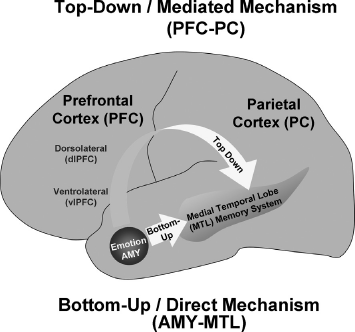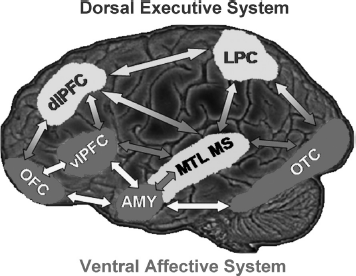Neural correlates of emotion-cognition interactions: A review of evidence from brain imaging investigations
- PMID: 22059115
- PMCID: PMC3206704
- DOI: 10.1080/20445911.2011.594433
Neural correlates of emotion-cognition interactions: A review of evidence from brain imaging investigations
Abstract
Complex dynamic behaviour involves reciprocal influences between emotion and cognition. On the one hand, emotion is a "double-edged sword" that may affect various aspects of our cognition and behaviour, by enhancing or hindering them and exerting both transient and long-term influences. On the other hand, emotion processing is also susceptible to cognitive influences, typically exerted in the form of emotion regulation. Noteworthy, both of these reciprocal influences are subjective to individual differences that may affect the way we perceive, experience, and eventually remember emotional experiences, or respond to emotionally challenging situations. Understanding these relationships is critical, as unbalanced emotion-cognition interactions may lead to devastating effects, such as those observed in mood and anxiety disorders. The present review analyses the reciprocal relationships between emotion and cognition, based on evidence derived from brain imaging investigations focusing on three main topics: (1) the impact of emotion on cognition, (2) the impact of cognition on emotion, and (3) the role of individual differences in emotion-cognition interactions. This evidence will be discussed in the context of identifying aspects that are fundamental to understanding the mechanisms underlying emotion-cognition interactions in healthy functioning, and to understanding changes associated with affective disorders.
Figures





References
-
- Allen P. A., Kaut K. P., Baena E., Lien M.-C., Ruthruff E. Individual differences in positive affect moderate age-related declines in episodic long-term memory. Journal of Cognitive Psychology. 2011;23(6):768–779.
-
- Allen P. A., Kaut K. P., Lord R. G., Hall R. J., Grabbe J. W., Bowie T. An emotional mediation theory of differential age effects in episodic and semantic memories. Experimental Aging Research. 2005;31(4):355–391. - PubMed
-
- Amaral D. G., Price J. L., Pitkanen A., Carmichael S. T. The amygdala: Neurobiological aspects of emotion, memory, and mental dysfunction. New York, NY: Wiley-Liss; 1992.
-
- Anderson A. K., Phelps E. A. Lesions of the human amygdala impair enhanced perception of emotionally salient events. Nature. 2001;411:305–309. - PubMed
LinkOut - more resources
Full Text Sources
